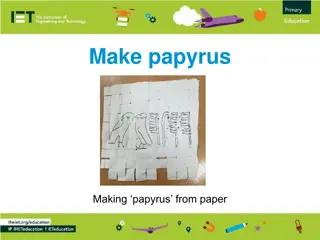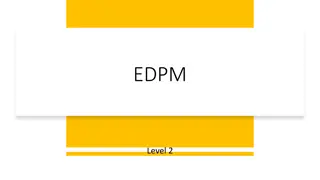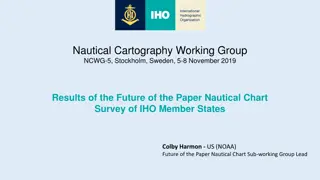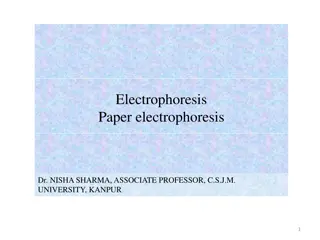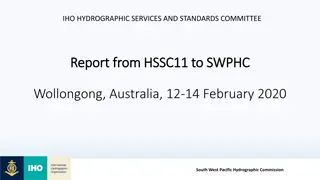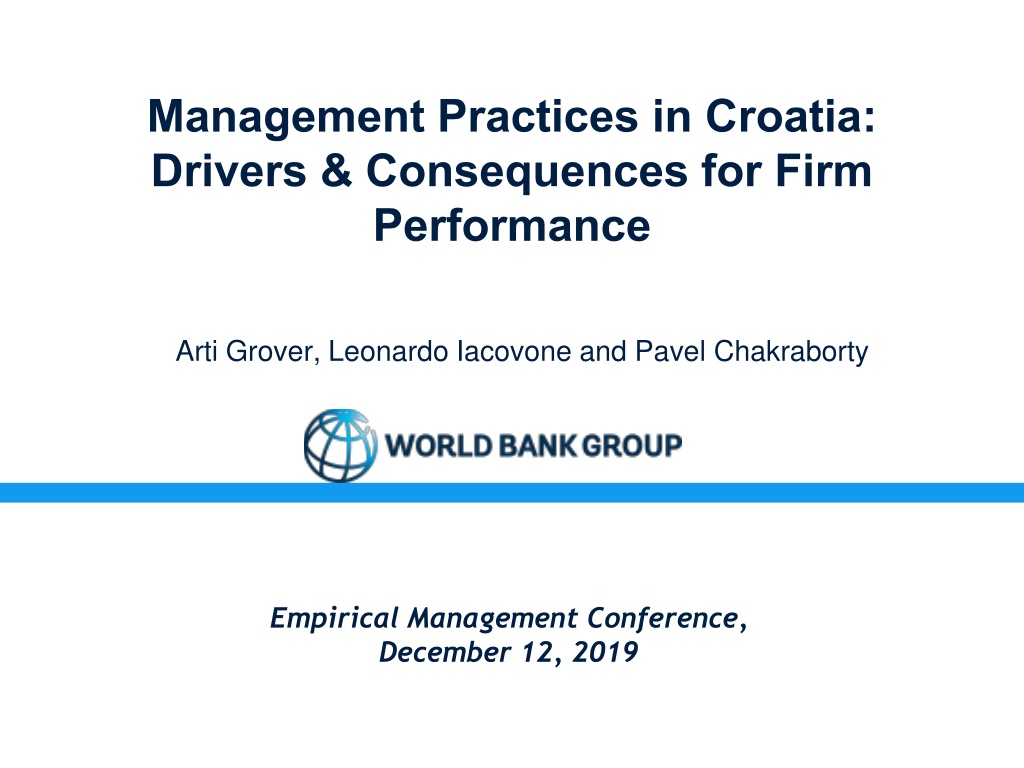
Management Practices and Firm Performance in Croatia
This presentation explores the drivers and consequences of management practices on firm performance in Croatia, using empirical evidence from a study conducted at an management conference. The focus is on understanding what makes certain firms more productive than others, emphasizing the importance of management capabilities and practices. Global evidence suggests that effective management practices significantly impact firm productivity, highlighting the relevance of measuring and benchmarking management practices in different contexts like Croatia. Additionally, the skepticism around optimal management practices and the variation in practices across countries are discussed, shedding light on the complexity of this phenomenon.
Download Presentation

Please find below an Image/Link to download the presentation.
The content on the website is provided AS IS for your information and personal use only. It may not be sold, licensed, or shared on other websites without obtaining consent from the author. Download presentation by click this link. If you encounter any issues during the download, it is possible that the publisher has removed the file from their server.
E N D
Presentation Transcript
Management Practices in Croatia: Drivers & Consequences for Firm Performance Arti Grover, Leonardo Iacovone and Pavel Chakraborty Empirical Management Conference, December 12, 2019
AN EXAMPLE Two firms (in Croatia) Low-tech manufacturing sector, Zagreb Firm B Firm A 44 employees Founded in 2005 40 employees Founded in 1998 Value Added: 82.1 million Kuna Value Added: 9.5 million Kuna VA per employee: 1.87 million Kuna VA per employee: 237,500 Kuna 8 times bigger
WHAT MAKES FIRM B MORE PRODUCTIVE? Total Factor Productivity has been labeled as the measure of our ignorance (Abramovitz, 1956)
OUTLINE OF THE PRESENTATION Measuring Management practices Benchmarking management capabilities in Croatia Management and firm performance Drivers of Management Practices Policy Conclusions
MANAGEMENT MATTERS FOR FIRM PERFORMANCE: GLOBAL EVIDENCE TFP dispersion across firms can be very high: ratio of 90th to 10th percentile of firm productivity can range from 3 (US) to 5 (China, India) (Hsieh and Klenow, 2009) There is evidence that management practices can explain at least a part of it 22% of the 90th to 10th firm labor productivity in US (Bloom et al., 2019)
MANAGEMENT MATTERS, BUT WHY IS THERE SKEPTICISM? Bloom et al. (2013) detail two reasons for skepticism: Skepticism #1: Management is a complex phenomenon, so measurement is particularly hard Response: focus on management practices more narrow definition Skepticism #2: Optimal management practices may not be the same across countries/firms. Firms are always profit maximizing, and the practices they choose are a result of that not a cause. Response: look at cases of random variation in management; there should be no association with profit or productivity if variation is always optimal.
MOPS IN CROATIA: MODULES & QUESTIONNAIRE US Census Bureau MOPS 2015: Modules A (Management practices) and E (Background characteristics) Additional modules/questions: Training of managers and operational staff Innovation and technology use Access to finance Government programs: participation by firms in such programs
MOPS IN CROATIA: SAMPLING Sampling frame Sampling frame: FINA/Bisnode dataset, (all tax registered firms) Sector Sector: All manufacturing and services industries. (high-tech and low-tech manufacturing; knowledge and non-knowledge intensive services) Size Size : 10-250 employees for manufacturing and 6-250 for services (choosing a higher threshold was costly in terms of firm count) Interview count Interview count: 727 firms
BENCHMARKING STRUCTURED MANAGEMENT PRACTICES: MANUFACTURING
BENCHMARKING STRUCTURED MANAGEMENT PRACTICES: MANUFACTURING An average firm adopts 53.8% of structured management practices; larger gaps in monitoring performance 0.7 0.6 0.5 0.4 0.3 0.2 0.1 0 overall Data driven performance monitoring Incentives and targets Russia US Croatia Mexico Pakistan
CROATIA VERSUS US Croatia: 42% score below 0.5; 3.5% have a score over 0.75 US: 18% have a score over 0.75
CROATIA VERSUS RUSSIA 2.5 2 1.5 Density 1 .5 0 0 .2 .4 .6 .8 1 Management score, 2017 Russia Croatia Large share of poorly managed firms compared to the US, but better relative to Russia
SECTORS: MANUFACTURING VERSUS SERVICES 3 2 Density 1 0 0 .2 .4 .6 .8 1 mscore manufacturing services Compared to manufacturing, services firms are poorly managed
SUB-COMPONENTS OF MANAGEMENT PRACTICES Compared to incentives and targets, firms use less of the performance monitoring practices
STRUCTURED MANAGEMENT PRACTICES AND FIRM PERFORMANCE
DOES MANAGEMENT DRIVE FIRM PERFORMANCE? Production function estimation: Iit e Mite Xit Lit Yit= AitKit Yit Lit Kit Lit Iit Lit Dividing by labor and taking logs: log = log + log + + + 1 log Lit + Mit+ Xit+ fi+ tuit, productivity term (Ait) is substituted by fixed effects fi, time dummies t and a stochastic residual uit.
MANAGEMENT AND FIRM PERFORMANCE IN CROATIA Profit Productivity Firm performance rises with increase in each quartile of management score
Firm performance rises with increase in each quartile of management score Innovation Technology adoption
Improving management score from 10th to 90th percentile: associated with sales/emp. by 36%; profits by 33%
11% higher likelihood of introducing new products or processes; 20% higher likelihood of adopting sophisciated technology
WHY FIRMS DONT ADOPT STRUCTURED MANAGEMENT PRACTICES? Information asymmetry: Information asymmetry: Not certain that they will benefit Don t know that they have poor management quality Don t know how to do it Unsure about the quality of service providers Underdeveloped market for business development services: Underdeveloped market for business development services: Availability of management service providers (breadth) Providers of management services highly heterogeneous (depth)
WHY FIRMS DONT ADOPT STRUCTURED MANAGEMENT PRACTICES?
WHAT DRIVES ADOPTION OF STRUCTURED MANAGEMENT PRACTICES?
WHAT DRIVES BETTER MANAGEMENT PRACTICES Regions and sectors Regions and sectors Foreign ownership or supplier to foreign firms? Foreign ownership or supplier to foreign firms? Exporters? Exporters? Size? Size? Age? Age? Managers and workers education? Managers and workers education?
WHAT DRIVES BETTER MANAGEMENT PRACTICES IN CROATIA? United States Croatia Unlike the US, management does not improve with firm age
WHAT DRIVES BETTER MANAGEMENT PRACTICES IN CROATIA? Management score for exporter is likely to be higher by 8 percent than an average firm.
CONCLUSIONS Structured management practices in Croatia father from frontier Structured management practices in Croatia father from frontier economies such as the U.S. economies such as the U.S. Practices relating to data driven performance monitoring pulls down the overall score in Croatia. Large heterogeneity in adoption of structured management Large heterogeneity in adoption of structured management practices practices Better management practices associated with superior firm Better management practices associated with superior firm performance performance Firm size, foreign linkages and the education level of non Firm size, foreign linkages and the education level of non- -managers explain this variation while firm age is negatively associated with explain this variation while firm age is negatively associated with management practices management practices suggesting a lack of pro suggesting a lack of pro- -competitive forces forces managers competitive
POLICY RECOMMENDATIONS Allocative efficiency: Allocative efficiency: Lack of relationship with firm age is an indication of a lack of learning and selection mechanism operating in Croatia. Business to Business linkages: Business to Business linkages: firms with foreign linkages more likely to be better managed. Capabilities of firms: Capabilities of firms: Tight association of managerial capabilities with performance for firms in Croatia and Russia Capabilities to design better incentives for human resources and have clear targets (explicit, formal, frequent practices) Instruments include financial incentives (e.g. vouchers, grants or fiscal incentives); inducement and recognition awards, and various kinds of extension and advisory services.
SOME LESSONS FROM THE SURVEY IN CROATIA Credits: ime Smoli (Asst. Professor/ Survey Specialist)
HOW ARE PROBLEMS RESOLVED IN CROATIAS FIRMS? What response best describes what happened in the company when a problem arose in its processes?
MANAGERS RESPONSE Somehow the problem was solved, we hired new people, but you can t just prevent someone of having (more) children!
HOW ARE PROBLEMS RESOLVED IN CROATIAS FIRMS? What response best describes what happened in the company when a problem arose in its processes?
MANAGERS RESPONSE There are workers on the market but they don t like to work. We are that kind of people here!
MONITORING PERFORMANCE Were scoreboards placed to show the production and other key indicators of performance in the company?
MANAGERS RESPONSE All scoreboards are in my head!
SURVEY IN CROATIA Data for 727 firms face to face interviews Stratified by sectors and regions Size threshold: 10-250 (manufacturing); 6-250 (Services) Response rate: 17 percent
MOPS in Russia: Modus Operandi and Challenges Method for interviewing: Method for interviewing: Face to face with Computer assisted personal interviewing (CAPI) Challenges: Challenges: Cost per interview: ~$110 per survey Only 13,000 firms with over 10 employees expected response rate is low (~10%) Counterparts interested in the lagging region but not enough firms to sample from (about 1300) Agreement from counterparts to support the survey in entire Croatia
COMPONENTS OF STRUCTURED MANAGEMENT IN Data driven performance monitoring Incentives and targets
MANAGEMENT AND FIRM PERFORMANCE: COMPARING COEFFICIENT ESTIMATES ACROSS COUNTRIES 45
TECHNOLOGY IN PROCUREMENT AND QUALITY CONTROL 55.1 Regarding the processes of procurement, inventory, and supply chain (purchases from suppliers), which technologies do you currently use? Answer key: 1= Not aware of this technology; 2= Aware of technology but don t use it ; 3= Aware of technology but Not applicable in my firm/industry ; 4=Aware of technology and has been in use in the firm a) Handwritten management of information. (paper file system); Manual purchases from suppliers; Phone purchases from suppliers b) On-line platforms to search for suppliers and/or purchases c) Management of supply chain information using PCs, manually updated with inventory levels (e.g. Microsoft Excel and emails) d) Sophisticated technologies: Customer Relationship Management (CRM) software, Warehouse Management System (WMS) Software, Cloud system to manage information (Software-as-a-Service-SaaS model) If the answer to (d) is 4, answer the following question: 55.2 Is this technology licensed from a foreign-owned company? Yes =1 No =2 1.Control and quality management 56.1. Regarding the Control and quality management practices which technologies do you currently use? Answer key: 1= Not aware of this technology; 2= Aware of technology but don t use it ; 3= Aware of technology but Not applicable in my firm/industry; 4=Aware of technology and has been in use in the firm a) There is no specific standard methods b) Quality control system uses PCs or basic electronic systems c). Sophisticated technology for quality control such as Distribution Resource Planning (DRP), Lean (modern) manufacturing, Kaizen method, Just-in-time (JIT), Total Quality Management (TQM)), Business certification or certification renewals (e.g., ISO 9000, ISO 14000), six sigma, quality management system or similar methods 46 If the answer to c) is 4, answer the following question:




